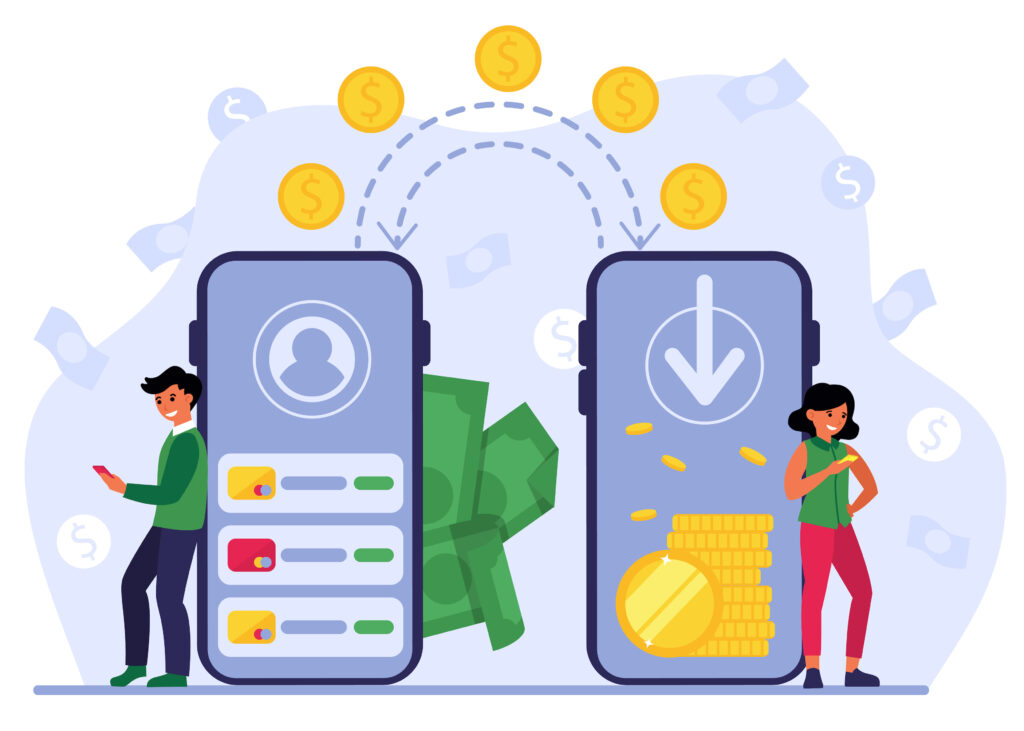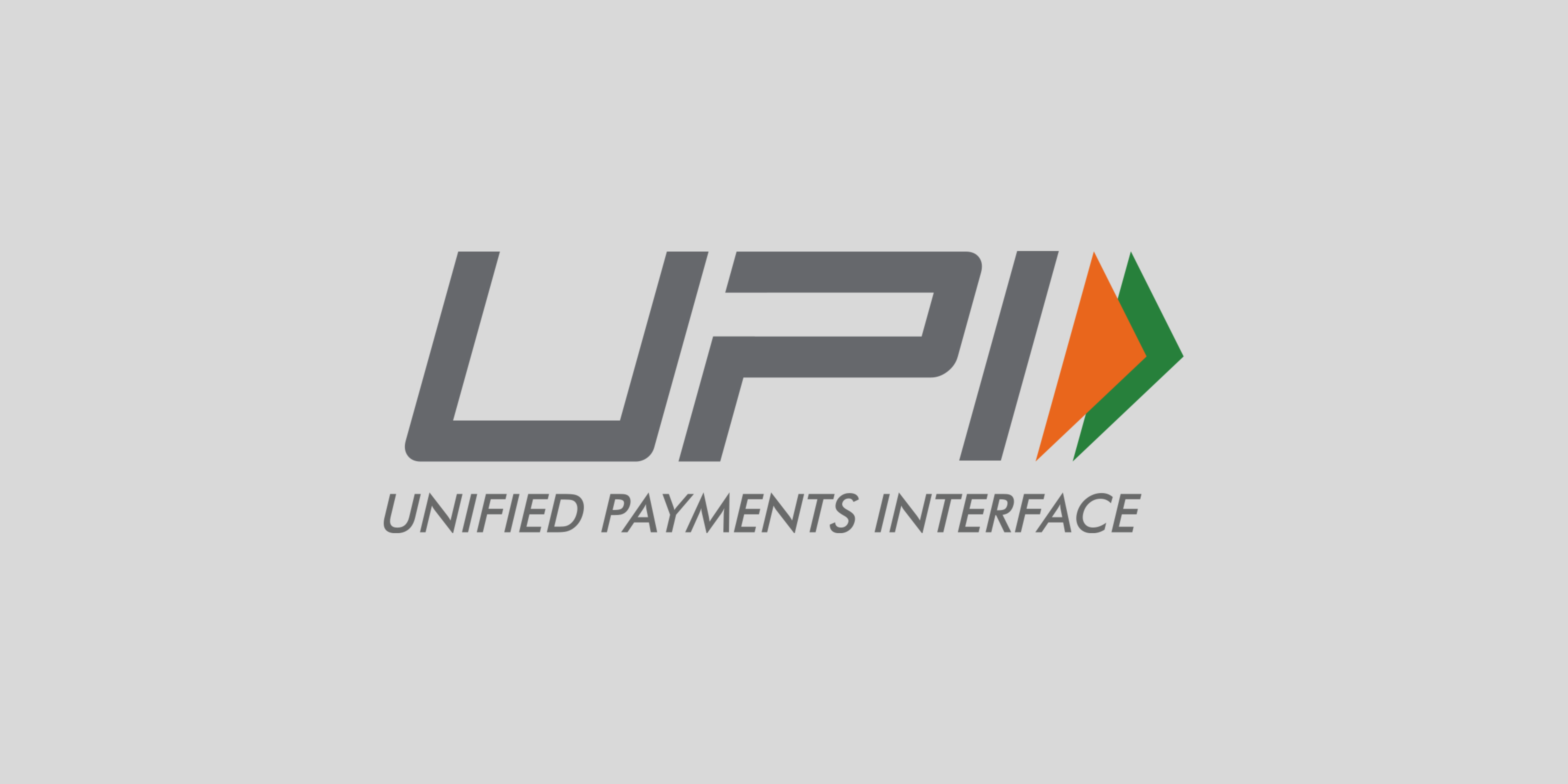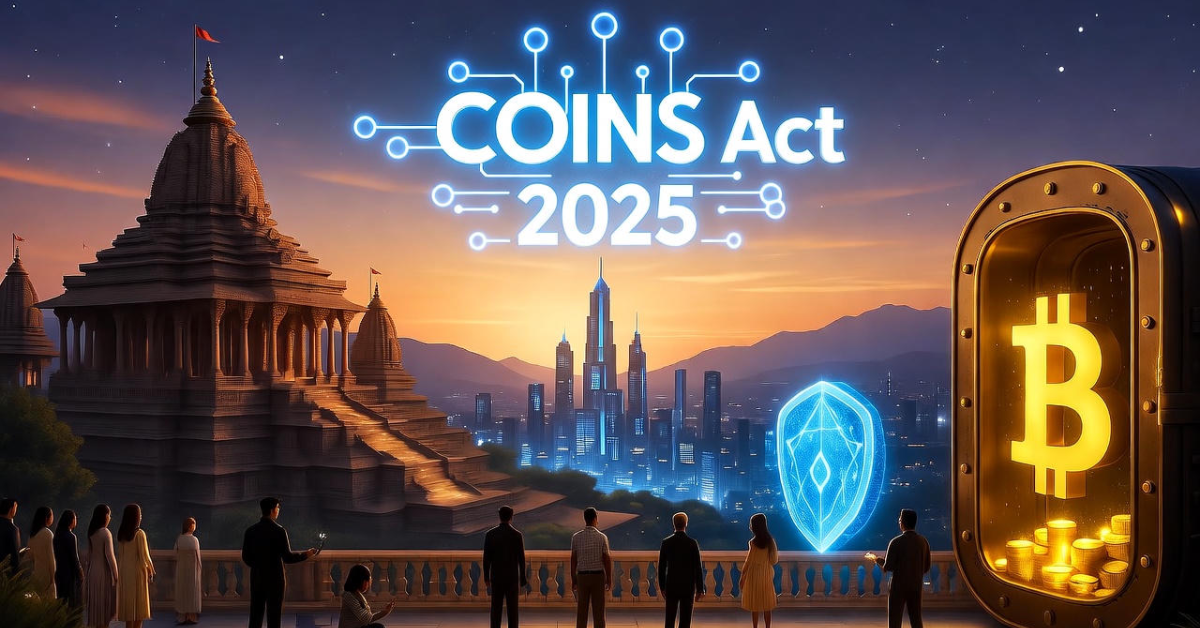- Home
- /
- Digitalization
- /
- UPI Revolution
Introduction
In recent years, the Unified Payments Interface (UPI) has emerged as a game-changer in the world of fintech. UPI is a real-time mobile payment system in India that enables users to transfer funds instantly between different bank accounts. It has not only transformed the way people transact but has also paved the way for the internationalization of digital payments. In this blog, we will delve into the details of UPI, its impact on the fintech industry, the top players in the field, and the global expansion of UPI.
Understanding UPI

Unified Payments Interface (UPI) was launched by the National Payments Corporation of India (NPCI) in 2016. It is a payment infrastructure that allows individuals to link multiple bank accounts and make payments using a single mobile app. UPI operates on a safe and secure platform, providing users with a seamless and convenient payment experience.
UPI Specifications and Transaction Limits

UPI is based on the concept of a virtual payment address (VPA), which is a unique identifier that can be linked to any bank account. A VPA can be in the form of a mobile number, an email address, or a custom name, such as john@bank. To make a UPI payment, one only needs to enter the VPA of the recipient, without having to share any bank details or card information.
UPI also supports various payment modes, such as scanning a QR code, entering a UPI ID, or using other options provided by different UPI apps. UPI apps are the applications that facilitate UPI transactions, such as PhonePe, Google Pay, Paytm, Amazon Pay, and many others. These apps are interoperable, meaning that one can use any UPI app to pay for any other UPI app.
The UPI transaction limit refers to the maximum amount of money that can be transferred in a single UPI transaction. As of now, the UPI transaction limit is set at Rs. 1 lakh per transaction for most UPI apps. However, some banks and UPI apps may have different transaction limits.
The UPI transaction limit per day is also determined by NPCI and the banks. The NPCI has set a limit of 20 transactions per day for normal UPI transactions, and a limit of Rs. 5 lakhs per day for peer-to-merchant transactions (such as bill payments and merchant transactions). However, these limits may vary depending on the bank and the UPI app.
Revolutionizing Fintech

Seamless Transactions
UPI has eliminated the need for traditional methods like cash or cards, offering a more convenient and secure mode of payment. Users can make payments with just a few taps on their smartphones, reducing the hassle associated with traditional banking.
Financial Inclusion
One of UPI’s key strengths lies in its ability to bring financial services to the masses. Even individuals without a traditional bank account can access digital transactions through UPI, fostering financial inclusion and bridging the gap between urban and rural areas.
Interoperability
UPI operates on an open architecture, allowing interoperability between different banks and financial institutions. This has created a level playing field, encouraging healthy competition among players in the fintech space.
Top Players in UPI

Google Pay

Google Pay, a leader in digital payments, leverages UPI to redefine the Android user experience. Its intuitive design makes UPI transactions accessible, extending beyond peer-to-peer exchanges to include in-app purchases and utility bill payments. Google Pay’s success with UPI showcases its commitment to driving digital transaction evolution, cementing its role in India’s fintech revolution. Get Google Pay now!
PhonePe

PhonePe, a UPI frontrunner, transforms India’s digital payments landscape with its seamless platform and user-friendly interface. Acquired by Flipkart, it facilitates quick and secure peer-to-peer transactions, diversifying into bill payments and investments. With innovation driving its commitment, PhonePe significantly contributes to UPI’s widespread adoption, solidifying its position in India’s fintech revolution. Get PhonePe now!
Paytm

Paytm, a pioneer in Indian digital payments, fuels widespread UPI adoption. Integrated into its versatile platform, Paytm enables millions to conduct seamless transactions. As a key UPI player, it expands beyond basics, offering comprehensive financial services like bill payments and online shopping. With a user-friendly interface and innovative features, Paytm enhances UPI accessibility, reinforcing its leadership in the evolving fintech industry. Get Paytm now!
Amazon Pay

Amazon Pay, Amazon’s financial arm, integrates UPI for swift and secure transactions, extending beyond online shopping to cover utility bill payments. This reflects Amazon Pay’s commitment to an enhanced customer experience, offering a one-stop solution for both shopping and financial transactions, shaping India’s digital payments ecosystem significantly.
BHIM (Bharat Interface for Money)

BHIM, a government-led initiative, promotes digital payments and financial inclusion through UPI. Developed by NPCI, it provides a straightforward platform for secure UPI transactions, simplifying money transfers by linking multiple bank accounts. BHIM serves as a crucial bridge between traditional banking and the digital era, fostering financial literacy and contributing to the goal of a cashless economy in India.
Internationalization of UPI

UPI’s success has attracted global attention. Several countries, including Singapore, Nepal, Bhutan, and the UAE, have adopted or are exploring its integration. This internationalization presents exciting opportunities:
UPI 2.0
With the introduction of UPI 2.0, the NPCI aims to enhance UPI’s capabilities and expand its reach beyond the borders of India. UPI 2.0 includes features like an overdraft facility, QR-based payments, and invoice generation.
Cross-Border Transactions
UPI is transforming cross-border transactions with its streamlined and efficient platform. Its seamless integration facilitates swift and secure international transfers, marking a significant advancement in the evolution of global digital payments.
Collaboration with International Players
UPI is forging collaborations with international players, enhancing global financial integration. These partnerships enable seamless cross-border transactions, positioning UPI as a key player in the international fintech landscape.
Global remittances
UPI is reshaping global remittances, offering a seamless and cost-effective solution for cross-border transactions. With its interoperability and user-friendly features, UPI ensures swift and secure international transfers, contributing to financial inclusion and simplifying the global remittance landscape.
Global financial inclusion
UPI is a key player in promoting global financial inclusion, offering a user-friendly platform for digital transactions. With its open architecture and versatility, UPI breaks traditional barriers, reaching the unbanked and underserved populations worldwide. Recognized internationally, UPI is driving financial inclusion globally, ensuring broader access to essential financial services.
Challenges and the Road Ahead

Despite success, UPI grapples with challenges like cybersecurity, digital literacy, and interoperability. Ongoing technological innovation, efforts to bridge the digital literacy gap, and maintaining seamless interoperability are essential for its continued success.
Security concerns
Security is paramount for UPI, addressed through robust encryption and two-factor authentication. Continuous advancements and collaborations with cybersecurity experts ensure a secure digital payment environment, assuring users of a safe platform for financial transactions.
Digital literacy gap
The rise of the Unified Payments Interface (UPI) has underscored a digital literacy gap, emphasizing the need for enhanced awareness. Despite UPI’s user-friendly interface, efforts to bridge this gap should focus on targeted initiatives, empowering individuals in underserved areas with the necessary knowledge and skills for confident participation in the digital financial ecosystem.
Merchant adoption
Merchant adoption is crucial for UPI’s success, providing a seamless and cost-effective digital payment experience. Encouraging more merchants to adopt UPI reinforces its role in propelling the shift towards a cashless economy.
However, with concerted efforts from stakeholders, UPI is poised to overcome these challenges and continue its transformative journey.
Top FAQs About UPI

With the increasing popularity of UPI (Unified Payments Interface), it’s natural for people to have questions about this revolutionary payment system. In this blog, we have compiled a list of the top FAQs (Frequently Asked Questions) about UPI, addressing common inquiries and providing comprehensive answers. Read on to discover everything you need to know about UPI.
How Does UPI Work?
UPI operates on a “peer-to-peer” model, allowing users to send and receive money directly from their bank accounts using a UPI-enabled app. It uses a unique identifier called the UPI ID, which is linked to the user’s bank account.
Which Banks Support UPI?
Almost all major banks in India support UPI. Users can check with their respective banks to ensure that they are UPI-enabled and can seamlessly integrate with UPI-enabled apps.
Are there fees for using UPI?
Many banks offer UPI services free of charge but check with your bank for any applicable fees. Charges may apply for certain transactions or if using third-party UPI apps.
What Transactions Can I Perform with UPI?
UPI supports a wide range of transactions, including peer-to-peer transfers, bill payments, mobile recharges, and online shopping. The versatility of UPI makes it a comprehensive solution for various financial needs.
Is UPI Safe?
Yes, UPI is considered a secure mode of digital transactions. It employs robust security features, including two-factor authentication, UPI PIN, and end-to-end encryption, ensuring the confidentiality and integrity of transactions.
Is UPI accepted internationally?
Several international markets, including Singapore, Malaysia, UAE, France, Nepal, UK, Mauritius, Sri Lanka, and more, are now accepting UPI payments. India is actively broadening the reach of its digital payment systems, such as RuPay and UPI (Unified Payments Interface), on a global scale.
Do I Need a Smartphone for UPI?
Yes, UPI transactions are primarily conducted through smartphones. Users need to download a UPI-enabled app from their respective app stores and link their bank accounts to start using UPI.
How Can I Generate a UPI ID?
To generate a UPI ID, users need to download a UPI-enabled app, register, and link their bank account. During the registration process, they can create a unique UPI ID linked to their account.
What is a UPI PIN?
A UPI PIN (Personal Identification Number) is a secure 4- or 6-digit code that you set during UPI registration. It is used to authorize transactions and ensure the security of your UPI transactions.
What Happens If I Forget My UPI PIN?
In case you forget your UPI PIN, most UPI-enabled apps provide an option for resetting the PIN. This usually involves a verification process to ensure the security of the account.
Can I Transfer Money Without Knowing the Receiver’s Bank Details?
Yes, with UPI, you can transfer money without knowing the receiver’s bank details. The UPI ID serves as a unique identifier, eliminating the need for lengthy bank account details.
What are the benefits of using UPI?
- Convenience: Make payments anytime, anywhere, with just a few taps on your phone.
- Security: UPI uses robust security protocols and PIN verification, making transactions safe.
- Instantaneous: Funds are transferred instantly to the recipient’s account.
- Cost-effective: No transaction charges for most UPI payments.
What are the limitations of UPI?
- Transaction limit: There are daily and per-transaction limits for UPI transfers, depending on your bank.
- Internet dependency: While some features like “on-call” UPI work offline, most transactions require an internet connection.
What are some of the prospects for UPI?
Expect continuous innovation in the UPI space, including integration with advanced technologies like AI and blockchain. Additionally, international expansion and wider merchant adoption are exciting possibilities.
Which UPI app should I choose?
There are several popular UPI apps available, including Google Pay, PhonePe, and Paytm. Each app offers a user-friendly interface and additional features such as bill payments, recharges, and more. Choose the app that aligns with your preferences and suits your needs.
Can I link multiple bank accounts to UPI?
Yes, UPI allows users to link multiple bank accounts to a single UPI app. This feature provides convenience in managing funds across various accounts and gives users the flexibility to choose which account to use for transactions.
Are there any transaction limits on UPI?
Yes, UPI apps typically impose limits on transaction amounts to ensure security. These limits can vary among apps and are subject to change. It is advisable to check the specific transaction limits set by your UPI app for maximum clarity.
Can I make online and offline payments using UPI?
Absolutely! UPI facilitates both online and offline payments. You can use UPI to make purchases at physical stores by scanning QR codes or initiating online transactions on e-commerce platforms. UPI’s versatility makes it a convenient payment option for various scenarios.
What is UPI Lite?
UPI LITE is a payment solution for quick, low-value transactions below ₹500. It utilizes the NPCI Common Library and existing UPI protocols on mobile phones for efficiency and wide acceptance. The goal is to provide a user-friendly way for real-time transactions without burdening the Remitter Bank’s core systems, ensuring risk mitigation.
What are the eligibility criteria for UPI?
To use UPI in India, you typically need an active bank account, a smartphone with internet access, a mobile number linked to your bank account, a debit card, and a UPI-enabled mobile app. Specific requirements may vary between banks and apps, so it’s advisable to check with your bank for the latest information.
Conclusion

The Unified Payments Interface (UPI) has revolutionized the fintech industry in India and is now spreading its influence globally. With its simplicity, speed, and security, UPI has become a preferred mode of digital payment for millions of users. The collaboration between NPCI and international players further strengthens the prospects of UPI’s internationalization and its potential to transform the way we transact globally. As the world moves towards a cashless economy, UPI stands at the forefront, redefining the future of digital payments.












Leave a Reply